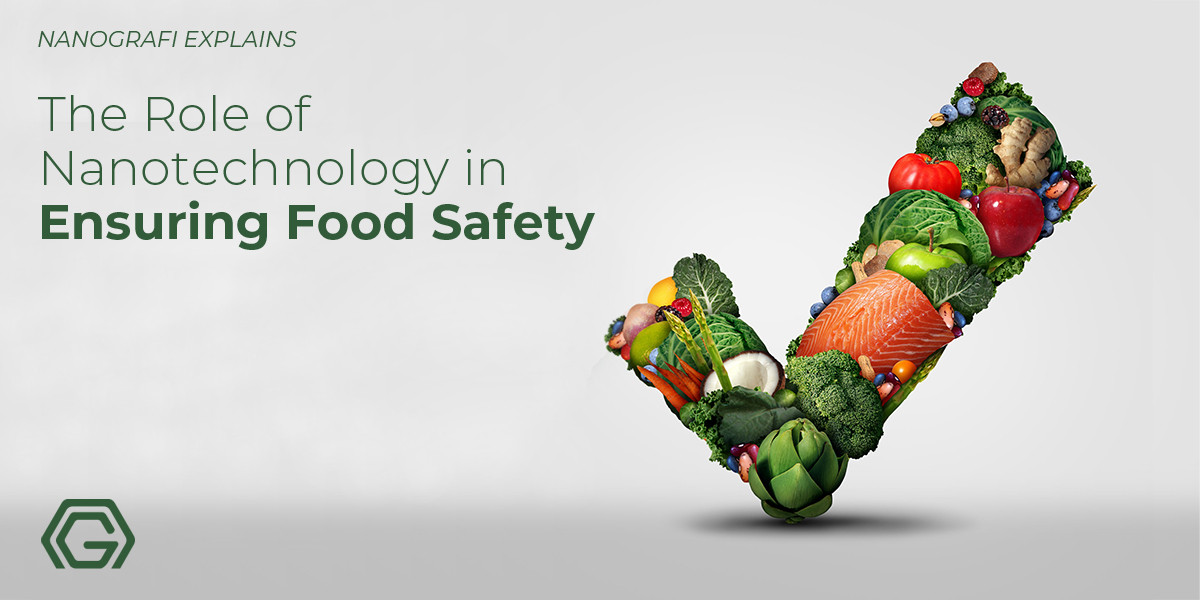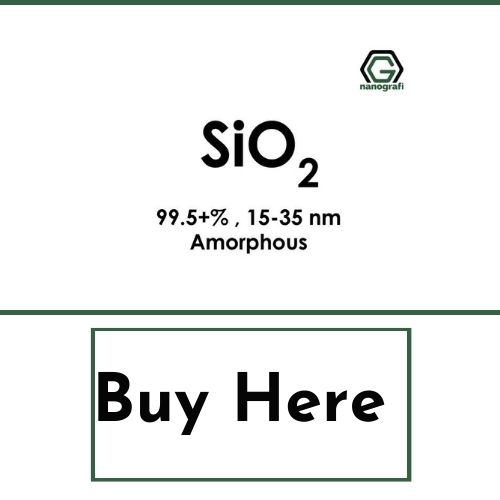The Role of Nanotechnology in Ensuring Food Safety
The promising and satisfactory properties of material in the nanoscale have encouraged engineers in food industries to consider nanostructured materials for the purpose of food safety as well as increasing their health effects.
Vahid Javan Kouzegaran
Analytical Chemist (Ph.D.) / Nanografi Nano Technology
Introduction
Nanotechnology now is developing in the area of food science with a variety of applications comprising texture and flavor, bioactive compounds encapsulation, food processing and packaging, microbial control, nutrient and bioactive delivery systems, highly sensitive biosensors with the ability to detect contaminants, allergens, pathogens and degradants. Nanotechnology also has the potential to be employed in order to design new food ingredients including multi-layered fibers, solid-liquid particles, assembled aggregates and new structures taking the advantage of proteins, lipids and other components that are present in natural food. Nevertheless, it is quite essential to investigate and analyze the specifications and properties of nanostructured materials with potential health effects and risks in food industries. Accordingly, the use of nanotechnology in the food science along with storage and packaging raises new questions on the most common and feasible risks for human health. This also requires a new set of legislations in order to legalized and regulate the labeling process and their presence in food 1.
Nanotechnology and Food Science
Based on the recent innovations in the area of nanotechnology, number of scientific and industrial areas such as food industries have been improved and transformed significantly. The numerous uses of nanotechnology is now highlighted proving the demands for nanoparticles in distinct fields of food science and food microbiology, food packaging, food processing, food safety, functional food, foodborne pathogens detection and shelf-life extension of food and other food products 2.
Nanotechnology in Food Processing
Food ingredients based on nanotechnology are being investigated and developed so that they could offer mitigated texture, taste and consistency. Nanotechnology has shown to increase shelf-life of various kinds of food materials considerably and decrease the amount of wastes mainly because of the microbial infestation. Furthermore, carriers with nanoscale characteristics are being utilized as delivery systems to contain food additives in food products with no disturbance to their fundamental morphology. It has been demonstrated that the particle size can directly affect the delivery of any compound with bioactive nature within an organism, especially in some cell lines where only particles in the nanoscale can be absorbed so efficiently despite those that are in the micron scale. In fact, an ideal delivery system is expected to deliver the active compound so accurately at the target tissue, guarantee the availability at a given time and specific rate and efficiently maintain and support active compounds at an appropriate level for a long period of time. Materials with nanoscale dimensions have been employed in the formation of biopolymer matrices, emulsions, simple solutions association and colloids providing adequate efficiency in delivery systems based on the mentioned qualifications. There are attempts to employ nanopolymers to replace commonly used and conventional materials in food packaging. Nanosensors have the ability to be applied in order to detect mycotoxins, contaminants and microorganisms in food 2.
Appearance of Food, its Taste and Texture
Nanotechnology can provide a broad range of solutions to mitigate the quality of food and also make the food taste even more pleasant. The techniques of nanoencapsulation have been employed so extensively in order to improve the flavor release as well as retention to keep culinary balance. In a recent study, nanoencapsulation has been used for the highly unstable and reactive plant pigment anthocyanins with various biological activities through which encapsulating cyanidin-3-O-glucoside (C3G) molecules located in the inner cavity of recombinant soybean seed H-2 subunit ferritin (rH-2) was carried out through the photo- and the thermal stability used in the fabrication and designing multifunctional carriers for delivery and bioactive molecule protection purposes. A common dietary flavonoid, Rutin, has a remarkable importance for pharmacological purposes. However, its application in food industries is restricted because of its poor aqueous solubility. The encapsulation using ferritin, on the other hand, can enhance the solubility, UV radiation and thermal stability of Rutin in comparison with the free samples. In another study, the application of nanoemulsions for the purpose of delivering bioactive compounds soluble in lipid has become a popular trend because it can be produced through natural food ingredients taking the advantage of easy production methods mainly to increase the water-dispersion quality and bioavailability based on their smaller size compared cells. Numerous metallic oxides namely titanium oxide and silicon oxide are used as food coloring agents in food industries. Furthermore, Silicon dioxide nanoparticles are extensively used nanomaterial in food industries as carriers of flavors & fragrances in food items 2.
To get more information about the applications of nanoparticles,
you can read our blog post here.
Nutritional Value
Proteins vitamins lipids and carbohydrates as well as most of the Boreal active compounds are sensitive to enzyme activity and high acidic environment and of the stomach and duodenum. The encapsulation of these compounds can increase their resistance in those harsh and extreme conditions I makes it possible for them to assimilate in food items which is normally quite difficult in non-capsulated for cease they are less soluble in water. Tiny edible capsules based on nanoparticles in order to improve the delivery of medicines fragile micronutrients and vitamins are being created to sustain critical health benefits. Nanostructured materials, nano-emulsification and nanocomposites are among the various techniques could have been employed green Capsule h substances in a smaller forms increase the efficiency of nutrients delivery (like protein and antioxidants). Polymeric nanoparticles have been demonstrated to be appropriate poor encapsulating a series of bioactive compounds like vitamins and flavonoids in order to protect and transport them target tissues to perform desirable functions 2.
Did you know Tetra Pak is one of Nanografi's Customers?
Nanosensors for Pathogen Detection
Nanoparticles with applications in designing biosensors exhibit high level of sensitivity. Microbiology, nanobiosensors and nanosensors are you employed in food industries in order to detect and determine pathogens, processing plants and quantification of food ingredients in food items. In fact, nanosensors function as indicators to react to alterations distinct conditions including temperature in storage rooms, microbial contamination, humidity and product degradation. There are varieties of nanostructured materials namely nanorods, nanofibers, nanoparticles and thin films being investigated for possible applications as biosensors. Optical immunosensors based on thin films have shown satisfactory results in detecting microbial substances with rapid detection and high sensitivity. Antigens, protein, molecules and specific antibodies are immobilized on thin nanofilms or sensors in immunosensors with the quality of emitting signals once they detect target molecules. An immunosensor -based on dimethylsiloxane microfluidic integrated with a specific antibody on a membrane nanoporous alumina has been developed for a fast detection of foodborne Staphylococcus aureus Escherichia coli. Nanostructured materials are also capable of detecting pesticides in food products 2.
Conclusion
The popularity of the nanostructured materials in food science and industries has been increasing over the past years. As the nanobiotechnology keeps improving, devices based on nanotechnology fall into the nanoscale more than ever and become even more sensitive. The applicability of nanotechnology in food packaging and food safety has perfectly perceived because of the promising results and achievements in food preservation based on nanomaterials. It has been proven that nanomaterials provide excellence delivery bioactive compounds to particular target tissues. There are still many challenges as well as opportunities to mitigate the current technology and sort out the issues in food industries.
To get more infromation, you can visit Blografi.
References
1. Colica, C. et al. The role of Nanotechnology in food safety. Minerva Biotecnol. 30, 69–73 (2018).
2. Singh, T., Shukla, S., Kumar, P., Wahla, V. & Bajpai, V. K. Application of nanotechnology in food science: Perception and overview. Front. Microbiol. 8, 1–7 (2017).
Recent Posts
-
Turning Noise into Power: Energy Harvesting with Piezoelectric Nanogenerators
Ambient acoustic energy, once an untapped resource, is now being converted into sustainable electric …5th Mar 2025 -
Holey Super Graphene in Li-ion Batteries: Next Generation of Energy Storage
Holey Super Graphene (hG), also referred to as “holey graphene,” is redefining li-ion ba …7th Feb 2025 -
Future Communication with 5G Technology and Advanced Materials
5G technology opens the doors to a new era in communication with faster connection speeds, low laten …6th Feb 2025







